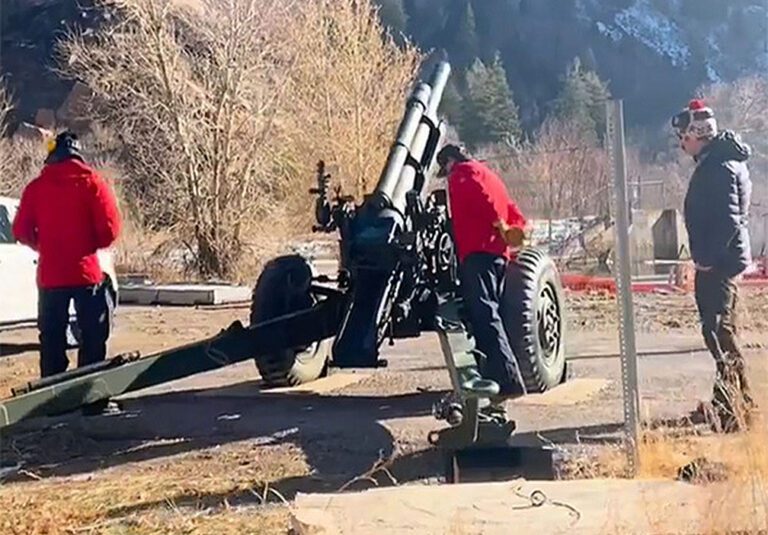SALT LAKE CITY — Utah Department of Transportation (UDOT) crews have begun test-firing howitzers in Big and Little Cottonwood canyons ahead of the state’s avalanche season.
UDOT officials say the test-firing “ensures the howitzers are precisely targeted on the areas needed to create controlled avalanches, which helps keep drivers on SR-190 and SR-210 safe during winter months.”
“Our goal is to make sure people can travel safely in our canyons throughout the winter,” said Steven Clark, UDOT avalanche program manager. “We’re always working to keep these vital highways open as much as possible, so Utahns and visitors can get to our state’s world-class outdoor recreation areas.”
During the test-firing process, crews verify predetermined targets in known avalanche areas.
“This ensures that the howitzers can be used in inclement weather when targets aren’t visible, and they can be fired using the target information confirmed today,” according to the news release.
In addition to howitzers, UDOT avalanche control methods include explosives placed by hand or dropped by helicopter, Avalaunchers, which use compressed gas to launch a small explosive, and remote avalanche control systems (RACS).
RACS are small towers installed on known avalanche paths that use fuel/air mixtures to create small, pinpoint explosions when remotely activated by UDOT crews.
These various tools provide several options for controlling avalanches on the approximately 70 avalanche paths in Little Cottonwood Canyon that cross SR-210, as well as other highways with avalanche risk, such as SR-190 in Big Cottonwood and U.S. 189 in Provo Canyon.
“UDOT is one of the leaders in transportation avalanche mitigation,” Clark said. “We utilize the newest technologies and are always looking to incorporate new techniques and equipment to ensure safety for all canyon travelers.”
The Trucker News Staff produces engaging content for not only TheTrucker.com, but also The Trucker Newspaper, which has been serving the trucking industry for more than 30 years. With a focus on drivers, the Trucker News Staff aims to provide relevant, objective content pertaining to the trucking segment of the transportation industry. The Trucker News Staff is based in Little Rock, Arkansas.















